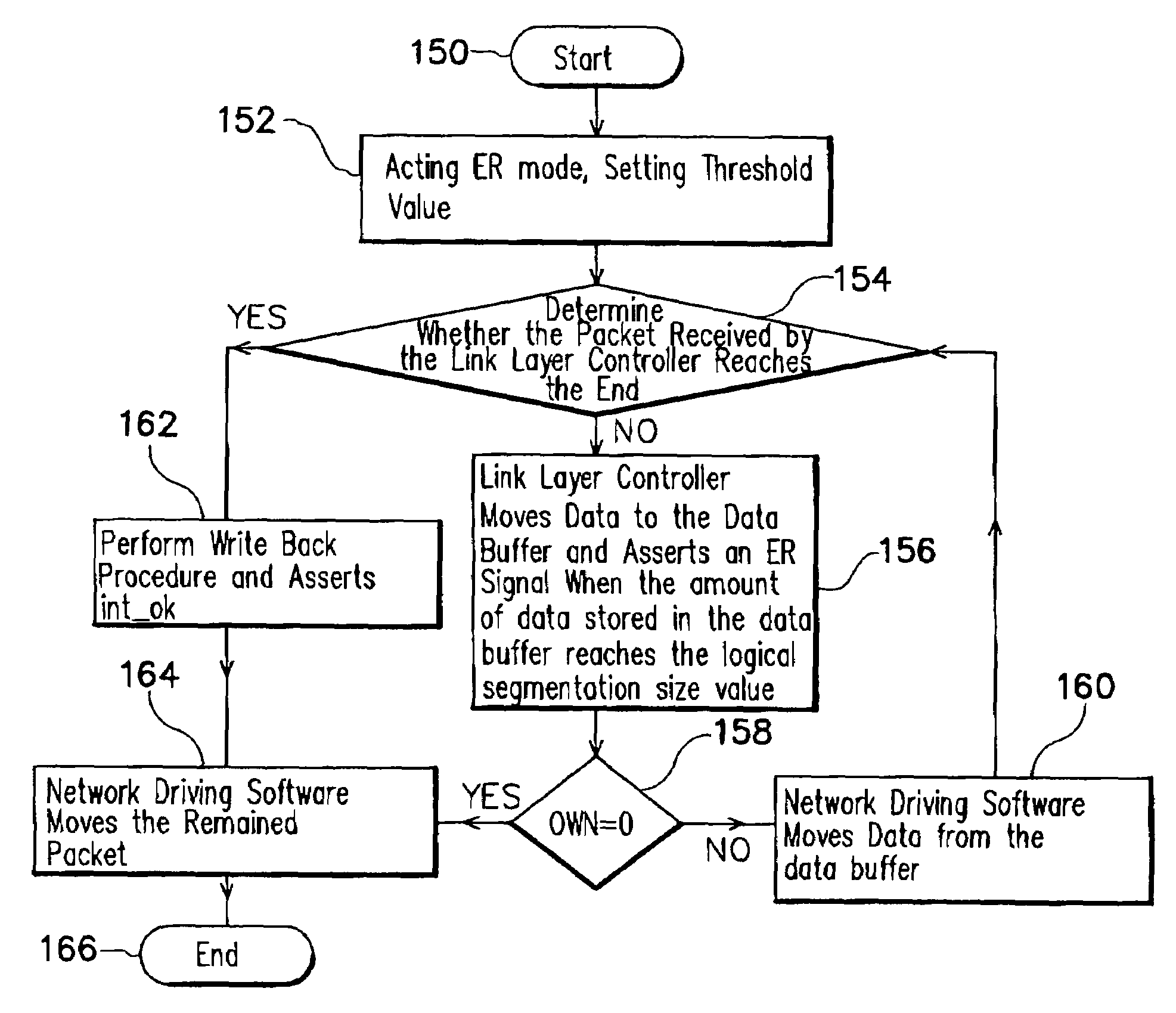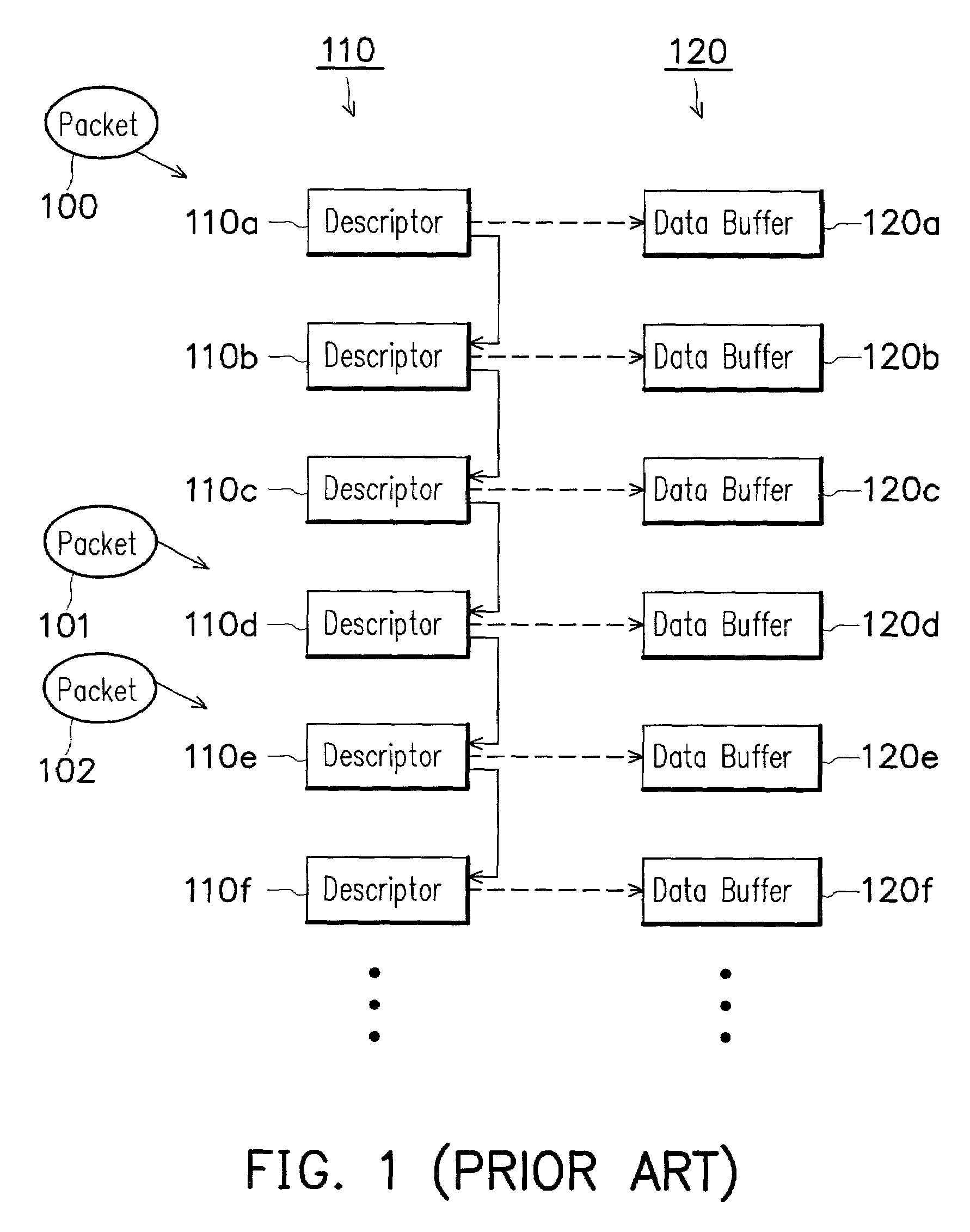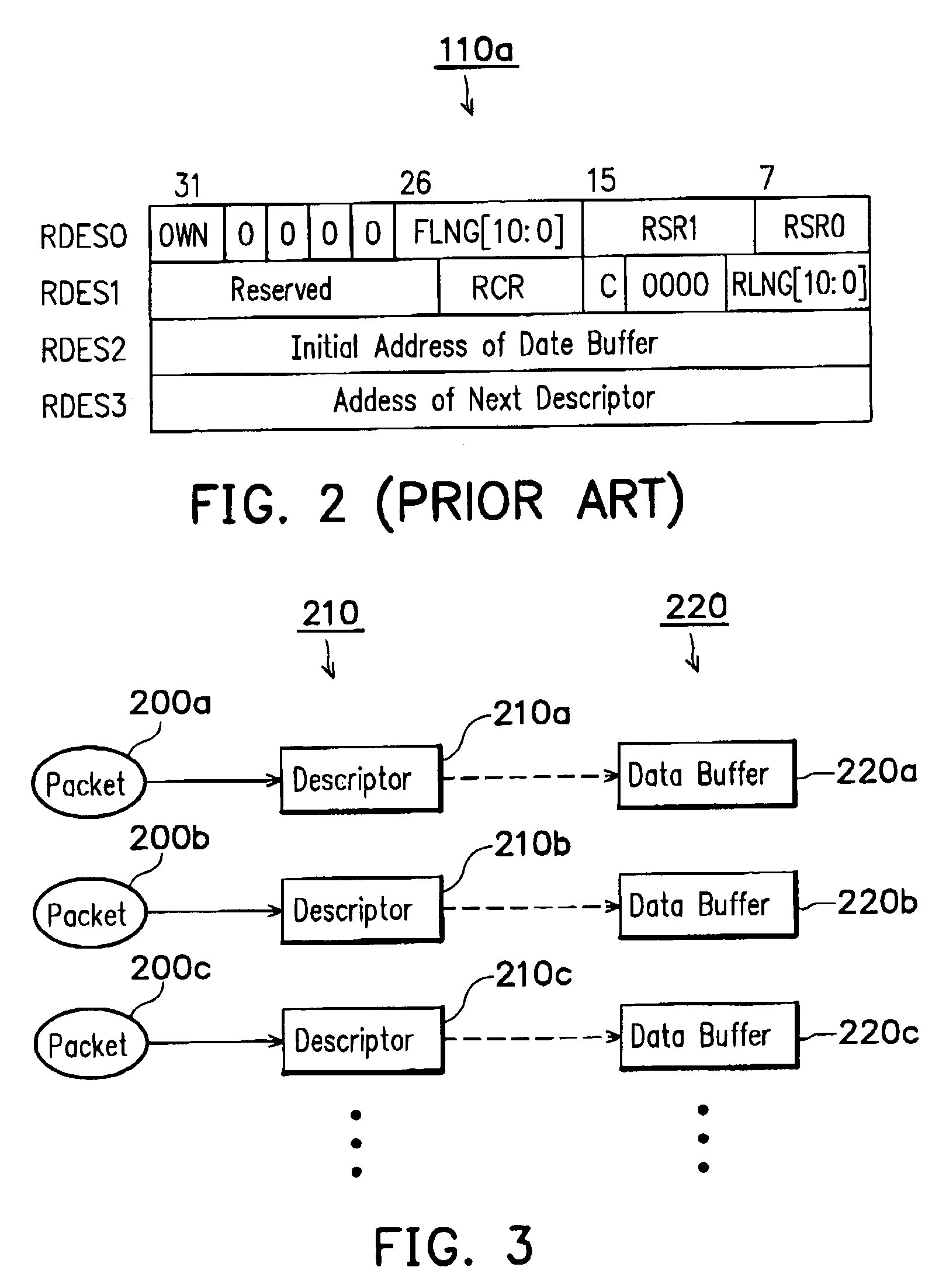Packet receiving method on a network with parallel and multiplexing capability
- Summary
- Abstract
- Description
- Claims
- Application Information
AI Technical Summary
Benefits of technology
Problems solved by technology
Method used
Image
Examples
Embodiment Construction
[0027]The invention provides a packet receiving-transmitting method in a packet-switching network for efficient handling of the packets that are received and to be subsequently forwarded to their destinations. The method of the invention is characterized particularly in that only one descriptor, rather than a plurality of descriptors linked into a list in the case of the prior art, is associated with each received packet. A preferred embodiment of the invention is disclosed in full details in the following with reference to FIGS. 3 through 5.
[0028]FIG. 3 is a schematic diagram depicting the mapping between a descriptor and a packet buffer utilized by the method of the packet receiving-transmitting with parallel multiplexing capability of the invention.
[0029]A computer located at a node of a network is used as an example. During initiating a network driving software, the computer allocates a descriptor list 210 and activates an early receiving mode, and then a logical segmentation si...
PUM
 Login to View More
Login to View More Abstract
Description
Claims
Application Information
 Login to View More
Login to View More - R&D
- Intellectual Property
- Life Sciences
- Materials
- Tech Scout
- Unparalleled Data Quality
- Higher Quality Content
- 60% Fewer Hallucinations
Browse by: Latest US Patents, China's latest patents, Technical Efficacy Thesaurus, Application Domain, Technology Topic, Popular Technical Reports.
© 2025 PatSnap. All rights reserved.Legal|Privacy policy|Modern Slavery Act Transparency Statement|Sitemap|About US| Contact US: help@patsnap.com



